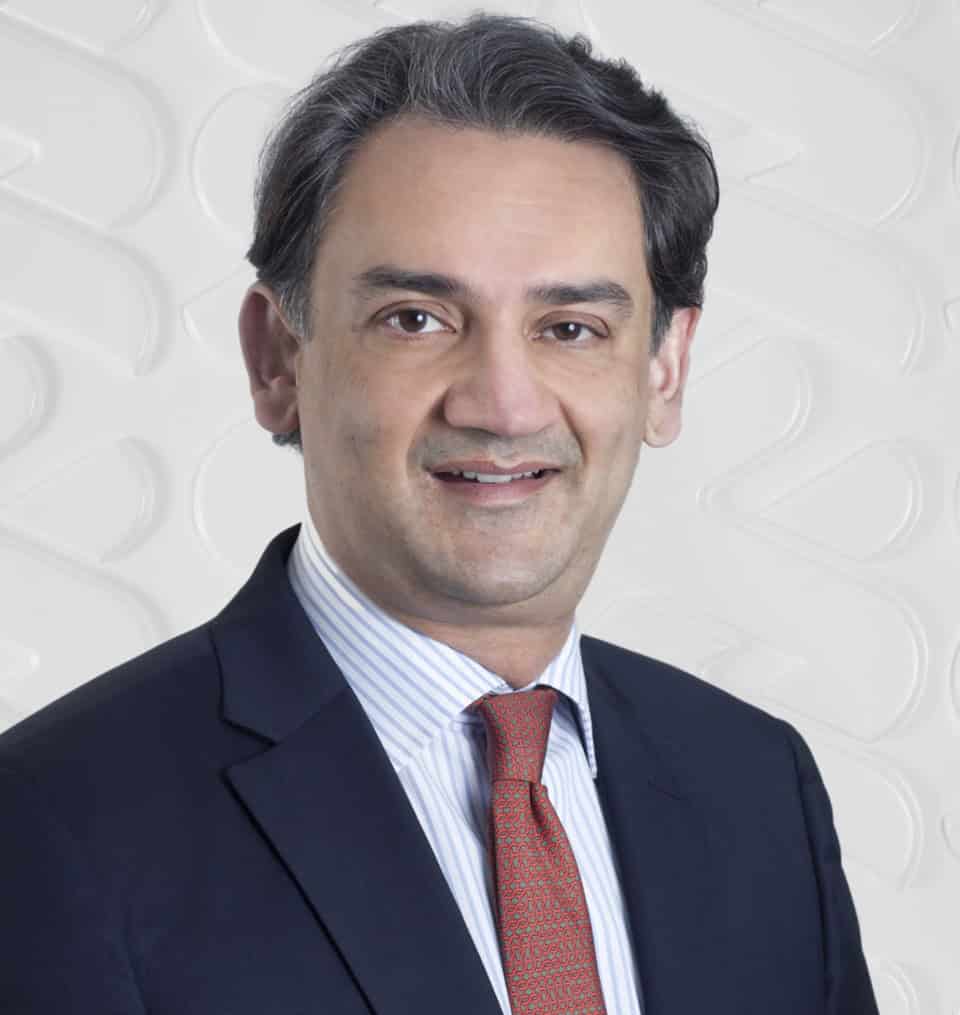Abbas Husain, Standard Chartered’s global head of Infrastructure and Development Finance, discusses the rapid pace of change and innovation in the field with Global Finance.
Global Finance: Standard Chartered is this year’s Best Investment Bank for Infrastructure Finance. How does this award reflect the firm’s mission?
Abbas Husain: This award reinforces our role as a trusted partner in driving sustainable development and economic progress. It reflects our commitment to delivering innovative financial solutions that enable critical infrastructure projects, strengthen trade corridors, and support long-term growth.
GF: Is infrastructure finance changing?
Husain: Alternative sources of capital—development finance institutions (DFIs), export credit agencies (ECAs), infrastructure funds, and capital markets project bonds—are becoming increasingly important.
We’ve also seen longer tenors for strategic projects. Some megaprojects, particularly in renewables and infrastructure, are securing tenors beyond 20 years. Middle Eastern deals structured with short-term vehicles like “soft-mini perms”—a type of loan that becomes subject to more onerous terms if it is not refinanced by the maturity date—have incentivized sponsors to refinance before the contractual maturity of the facilities. There’s also been an increased use of refinancing strategies as sponsors secure short-term bank financing with plans to refinance via the bond market.
GF: In which regions are you seeing the most innovative infrastructure projects?
Husain: There’s a strong pipeline. MENA is home to many major infrastructure projects for transportation, water and waste management, and renewables and green hydrogen. Regional governments are actively pursuing privatization and public-private partnerships (PPPs) to attract foreign investment and ease fiscal pressures. Meanwhile, infrastructure has become an attractive asset class for banks, private credit, and sovereign funds.

Governments are accelerating their clean energy targets, resulting in several large-scale solar/wind, waste-to-energy, carbon capture, and green hydrogen projects. Growing water scarcity concerns are driving investments in desalination and wastewater treatment, with many pro-jects structured as PPPs. We are witnessing a renewed demand for baseload power after several years of focus on renewable energy, leading to a surge in the number of combined-cycle gas turbine projects in the region. Driven by the need for energy storage and peak shaving, or load shedding, we are also seeing a surge in projects related to battery energy storage systems.
GF: What trends do you expect will shape the infrastructure sector in the next year?
Husain: There’s a strong pipeline. MENA is home to many major infrastructure projects for transportation, water and waste management, and renewables and green hydrogen. Regional governments are actively pursuing privatization and public-private partnerships (PPPs) to attract foreign investment and ease fiscal pressures. Meanwhile, infrastructure has become an attractive asset class for banks, private credit, and sovereign funds.
Governments are accelerating their clean energy targets, resulting in several large-scale solar/wind, waste-to-energy, carbon capture, and green hydrogen projects. Growing water scarcity concerns are driving investments in desalination and wastewater treatment, with many pro-jects structured as PPPs. We are witnessing a renewed demand for baseload power after several years of focus on renewable energy, leading to a surge in the number of combined-cycle gas turbine projects in the region. Driven by the need for energy storage and peak shaving, or load shedding, we are also seeing a surge in projects related to battery energy storage systems.
GF: What trends do you expect will shape the infrastructure sector in the next year?
Husain: Global spending in clean energy investments exceeded $2 trillion for the first time in 2024. Achieving net-zero targets by 2030 will require even greater capital commitments, creating opportunities for innovative financing solutions.
At the same time, AI and digitalization are driving demand for data centers, with trillions of dollars in investment anticipated by 2030. Institutional investors and sovereign wealth funds are playing an increasingly active role in this space, particularly in high-growth regions.
Beyond sector-specific developments, we are likely to see an increase in refinancing and capital market solutions as sponsors adapt to evolving high-interest-rate conditions and seek to optimize their capital structures. This will drive demand for capital market solutions and alternative financing, including private credit, institutional funds, ECAs, and DFIs.
GF: Is investor appetite for infrastructure and project finance deals keeping pace?
Husain: Despite the rising complexity of cross-border investments, infrastructure projects have long-term economic viability, and we continue to see significant interest. Also, there are vast capital pools; Global Infrastructure Investor Association members have more than $2 trillion in assets under management either invested or ready to invest. In addition to ECAs, classic infrastructure funds, and multila-teral development agencies, we have seen pension funds, insurers, and asset managers flood the market in search of alternative and stable long-term growth.
GF: How are regulations impacting infrastructure finance?
Husain: Some of the most acute funding shortfalls are in developing markets. Addressing these requires public and private capital, impactful policy initiatives, appropriate risk allocation, and greater cross-border collaboration. To attract more investor capital, we need to help these markets pursue policy liberalization, address risks and governance issues, and provide transparent avenues for sustainable investing. The success of some ASEAN markets has been driven in large part by similar initiatives while China, for example, demonstrates the benefits of opening financial markets to global trade and collaboration.



